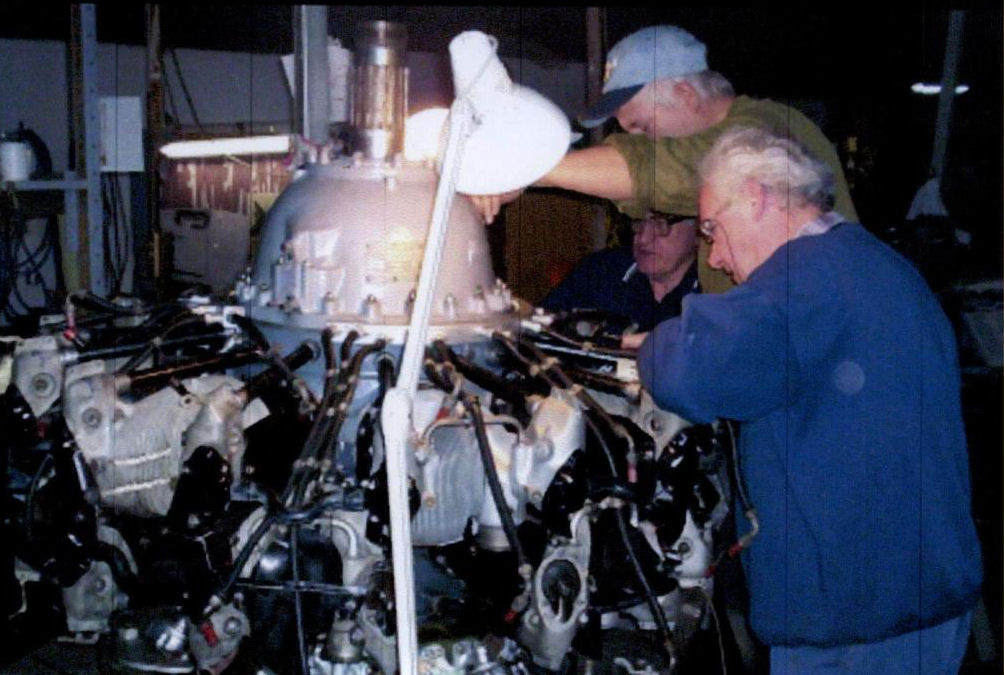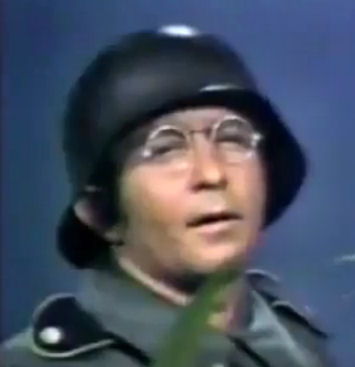|
|
|
Radschool Association Magazine - Vol 46 Page 9 |
|
Privacy Policy | Editorial Policy | Profit Policy | Join the Association | List of Members | Contact us | Index | Links |
|
Allan George's Gems. |
|
Back Go to page: 1 2 3 4 5 6 7 8 9 10 11 12 13 14 15 16 17 18 19 20 Forward |
|
|
|
You’d have to wonder why????
A bloke in the US owned a 1949 Cadillac which he completely covered with 38,295 pennies which he stuck to the car one by one using silicone (where would you get 38,295 pennies).
|
|
|
|
|
|
They added over 90 kilograms to the weight of the car and the entire project took 6 weeks. Well, I suppose if you've got nothing else to do!!
The Chinook and the Caribou.
In 2009 there was a recovery mission to extract a Caribou that had landed for maintenance issues at a tactical airstrip. The aircraft had some sort of vibration and when they landed and checked it out they found cracks in some structural parts of the tail. Since the fleet of Caribous was being retired within the next two months they decided not to bother repairing it in place. The vertical stabilizer and engines were removed and then it was rigged for retrieval. Normally the wings would have been removed as well but the decision was made to keep them on since there was sufficient power available to lift the weight.
The following video was sent to us and was submitted by someone who was assigned as an Exchange Officer with the Australian Army – unfortunately, we don’t have his name.
The video starts with some shots of the lifting gear being rigged onto the airplane. It does stop for a bit but let it go, it will start again. Along the wings you can see spoilers attached to prevent the wings from “flying” while the airplane was being carried as a load. The approach to pick up the airplane comes in at an angle to avoid the remaining bit of the vertical stabilizer. The airplane gets lifted then put down again because the crew members wanted to check out part of the rigging and harness. Once they checked that it was ok, the airplane is lifted and flown back to Townsville’s Airport. It was about a 50 minute flight once underway.
Click the pic below to see the video.
|
|
Orwell’s 1984.
CCTV has nothing on this!!!!!!!
This picture was taken with a 70,000 x 30,000 pixel camera (2100 Mega Pixels.) These cameras are not sold to the public and are being installed in strategic locations.
Click HERE to see the camera in operation – it takes a little while to load.
The camera can identify a face among a multitude of people. Place your computer’s cursor in the mass of people and double-click (or roll the mouse wheel) a couple times (or 'finger-spread' on a device.) Scary sharp!! George Orwell must be smiling somewhere out there.
|
|
When everybody on earth was dead and waiting to enter Paradise, God appeared and said, "I want the woman to go that way and all the men to make two lines over there, one line for the men who were true heads of their household and the other line for the men who were dominated by their women. All the women are to report to St. Peter now”. Soon, the women were gone, and there were the two lines of men.
The line of the men who were dominated by their wives was 100 miles long and in the line of men who truly were heads of their household, there was only one man. God said to the long line, "You men should be ashamed of yourselves, I created you to be the head of your household! You have been disobedient and have not fulfilled your purpose! Of all of you, only one obeyed. Learn from him." God turned to the one man, "How did you manage to be the only one in this line?"
The man replied, "My wife told me to stand here."
|
|
Remote Aircraft.
A key symbol of the jet fighter culture vanished in 2011 from Nevada’s Nellis Air Force Base, the hub of air-war strategy and tactics, when senior Air Force officials ordered the “Home of the Fighter Pilot” sign to be taken down to be more welcoming for drone operators.
|
|
|
|
|
|
“It wasn’t inclusive enough for the large mission at Nellis,” a spokesman for U.S. Air Combat Command, which oversees the service’s arsenal of bombers and jet fighters, told The Washington Times.
The vacant space is now a symbol of the fighters and bombers giving ground to remotely piloted aircraft, whose operators at Nellis control drones flying surveillance and hunt-and-kill missions thousands of miles away. Since a high point in 1991 with the historic Desert Storm strikes on Iraq, the Air Force fighter colony has grown smaller, with fewer flying hours and declining readiness rates. A flier shortage has necessitated that a squadron readying for deployment “borrow” pilots from a returning unit.
It has been reported that some pilots fly only twice a month, a rate that makes it difficult to maintain skills for operating a supersonic jet. A cutback in flying hours has gone on since before the automatic “sequestration” budget cuts began earlier this year which ushered in a whole new set of flying restrictions. These are perishable skills you just can’t do it twice a month and call it good. The notion of being a fighter pilot has always been the stuff of childhood dreams, but within the USAF, the appeal is fading. There is a declining interest from cadets at the USAF Academy in trying out to be fighter pilots. More want to go the cargo plane route as this is an avenue toward a civilian job as an airline pilot.
Pilots are getting little flying time which is not what they signed up for.
The USAF currently has 3,250 active-duty fighter pilots, 200 short of what is needed to meet operational and staff requirements. A unit’s idle time of three months generally leaves it unable to mobilize as mission-ready, meaning that a large portion of combat airplanes might not be able to respond immediately to a crisis.
More and more, the Air Force is turning to the Air Guard and reserve units to go to war. The war on terrorism and its need to kill terrorists one by one in remote areas has hastened the shift toward remotely piloted aircraft. The Pentagon has even created a war medal for drone operators sitting in the safety of a control room continents away from the fighting. The USAF operated only a few drones in 2001, but now flies 285 and the number keeps growing.
Pilots have seen it coming.
|
|
|
|
|
|
MQ-1 Predators or drones carrying weapons like laser guided air-to-surface missiles are becoming the most valued air power asset in many current scenarios. There are scientists with great plans in motion for even more capable unmanned combat aerial vehicles to share and possibly rule the skies of the future.”
Additionally, the USAF has seen money that could have gone for flying hours eaten up by the F-35 Joint Strike Fighter. Its cost has skyrocketed and its scheduled arrival in operational units keeps being pushed to the future just when the Air Force needs to replace airframes that first flew more than 30 years ago.
The Navy are in much the same boat. 12 months ago, for the first time in history, the US Navy launched a plane without a pilot in it from an aircraft carrier at sea. The crew of the Bush and the team behind the highly autonomous Northrop Grumman X-47B loaded up the deck’s second catapult with the drone and shot it off into the sky above the eastern Atlantic. The drone, which had its own call-sign, “Salty Dog 502″ turned downwind and passed over the ship twice, first from 1000 feet and then from 60 feet, before flying back to dry land in Maryland as landing on a carrier has yet to be perfected. The X-47B touched down and successfully caught the arresting wire on a mock carrier deck which is a very difficult manoeuvre. It is also a completely necessary manoeuvre as without it, the plane would career off the carrier and into the water. While it was a positive sign that the Navy’s new robot demonstrator could do it, the X-47B’s successful Trap catch was still on dry land.
With that, the era of the drone took a major step toward patrolling the skies above the world’s waterways. It’s something the Navy hopes will have big implications for supplementing manned fighter jets in a carrier air wing, providing both persistent surveillance far out at sea and ultimately firing weapons in highly defended airspace that might mean death for human pilots.
|
|
|
|
Senior US Navy officers openly likened the X-47B’s launch off the Bush to the first-ever launch of a plane off the U.S.S. Birmingham in 1910. The US is now the only nation that possesses a drone that can operate off and onto the deck of an aircraft carrier, a complex and dangerous environment that requires month of pilot training and constant deck-crew coordination. When the X-47B shot from the catapult off the Bush, it took a big step toward proving the U.S. would be the first.
But the X-47B, a Northrop Grumman creation, is a step ahead of other drones in another way. Almost all drones of its size, with a 62-foot wingspan, it’s about the same size as a F/A-18 Super Hornet, are flown by human beings. Those human beings might be thousands of miles away from the drone, but they have instruments that give them physical, real-time control of how the drone flies and what it sees. The X-47B is different, its flight plan is pre-programmed, a matter of an algorithm and the drone executes it autonomously, relying on GPS. The human back on board the ship only overrides it if something goes wrong.
Initially the X-47B had had some difficulty making the Trap on dry land, but difficulties catching the arresting gear ought to be expected. The Navy is literally doing something no drone has ever done before.
After the carrier landing, the next step for the $1.2 billion program is to execute an autonomous mid-air refuelling mission.
Click the pic below to see the launch and retrieval.
|
|
|
|
In a land full of Aarons and Benjamins, how the hell did Jesus find 6 blokes named Peter, John, James, Matthew, Andrew and Simon?? |
|
|
|
Lukla Airport
Perched at 2,800m (9,200ft) on a tiny outcrop of relatively “flat land” nestled amongst the world’s tallest mountains, Tenzing-Hillary Airport at Lukla, Nepal tests even the most confident flyers. It’s the starting point for trekkers climbing Mount Everest and is arguably the most dangerous part of the journey.
But despite the dangers, passengers scramble for a front row seat as there is no allocated seating on most airlines flying up to Lukla. The cockpit door is left open, or there is none, and the best seats in the house are 1A and 1B right behind the pilot and co-pilot. The flight takes 30 minutes from Kathmandu and it slowly winds its way up out of the capital of Nepal with the Everest massif dominating the breathtaking scenery.
The route then winds its way through valleys and well below ridge lines and then the Lukla airport appears, a tiny stripe of black in a vista of grandeur. However, the first thing that strikes you, and you hope your aircraft will not strike it, is a sheer mountain face at the end of the runway. There is only one chance at this. Undershoot the runway and your aircraft will plummet into a rock strewn ravine thousands of feet deep. Overshoot and it’s straight into the sheer rock wall.
You can see a video of an approach and landing at Lukla HERE. It was taken in high definition from a Dornier Do228 and shows both the majesty and terror of the airport’s precarious location.
Lukla’s Airport, was built by Sir Edmund Hillary and Sherpa Tenzing Norgay to assist in the efforts to build a better life for the residents of the region. It was renamed in their honor in January 2008. There are daily flights operated by five airlines between Lukla and Kathmandu during daylight hours and in good weather. The airport's paved 460m (1,510 ft) long runway with a 12 per cent gradient is only accessible to helicopters and small specialized STOL (Short Take-Off and Landing) aircraft, such as Dornier Do 228 and De Havilland Canada DHC-6 Twin Otters.
There are no landings aids.
Strange people.
Some people do strange and gutsy things, THIS definitely has to be way up there as one of the strangest and the gutsiest….
The B-24
The Consolidated B-24 Liberator became a major player for Allied forces during World War 2. Its exploits ranged the world over, as did her users and she saw action in a variety of roles in all major theatres. Designed to overtake the mythical Boeing B-17 Flying Fortress and appearing as a more modern design in 1941, the Liberator fell short of this goal but instead operated side-by-side with her contemporary to form a powerful hammer in the hand of the Allied bombing effort. Though the B-17 ultimately proved the favourable mount of airmen and strategic personnel, one cannot doubt her impact in the various roles she was assigned to play in.
|
|
|
|
|
|
The United States Army Air Corps (USAAC) issued a new specification in 1935. This specification required the development of a new multi-engined, long-range heavy bomber capable of exceeding a top speed of 300 miles per hour, besting a range of 3,000 miles, maintaining a service ceiling of at least 35,000 feet and taking on an internal bombload minimum of 8,000lbs. Production of the Boeing B-17 Flying Fortress was well underway and, in 1938, Consolidated was requested to help in its production. As part of the production initiative, Consolidated executives were brought to Boeing’s plant in Seattle, Washington to visit the factory. It was this meeting that prompted Consolidated to submit their own heavy bomber design with a more modern flair.
The United States Army Air
Corps (USAAC) granted Consolidated a design study in January of 1939
under C-212 with the intent that this new aircraft exceed the
performance specifications (speed, range and ceiling) of the B-17 and be
ready in time for production before the end of the war. Consolidated
wasted no time in developing their design, the Model 32, and brought
about a few revolutionary changes in the approach of American bomber
designs. Model 32 sported a tricycle undercarriage, the first American
bomber to do so, doing away with the traditional “tail-dragging” design
as utilized by the B-17. The
This aircraft was of a twin-engine sort and designed as a flying boat. Ultimately, the design fell by the wayside when an order for 200 examples was cancelled by the United States Navy due to program delays and a lack of available Wright engines.
The Davis Wing emerged from
the mind of David R. Davis, an aeronautical engineer working on a new
wing
planform,
a planform utilizing a short chord and high aspect ratio along with
thickness suitable to fit engines and fuel while maintaining efficiency.
His meeting in the summer of 1937 with Consolidated President Reuben H.
Fleet allowed the wing design to flourish as one of the most utilized
wing planforms of World War 2. The new wing was
Other features of the Model 32 included the selection of reliable 14-cylinder Pratt & Whitney R-1830 radial piston engines (also used in the DC3), deep bomb bay fuselage and a twin vertical fin tail assembly. The development process culminated in an offered contract on March 30th, 1939, for a flyable prototype under the designation of XB-24. The XB-24 was made available and achieved first flight on December 29th, 1939, from Lindberg Field in California with 4 x Pratt & Whitney R-1830-33 radial piston engines of 1,000 horsepower each. The aircraft failed to reach the projected top speed of the original design intentions but, overall, the first flight was a success. To help iron out the prototype design, a further six YB-24/LB-30A evaluation/pre-production models were ordered, built and delivered. These were followed by the B-24, seven examples of which only one was used for service testing.
The B-24 featured de-icing boots and deleted the leading edge slots of previous forms. Orders were beginning to pile up for the new Consolidated design, an amazing feat considering these were being received before the XB-24 had yet to fly. Production began at Consolidated’s San Diego plant of which the first six systems were earmarked for the French Air Force as LB-30A models. With the fall of France in 1940, these aircraft made it to British Royal Air Force hands via Lend-Lease. The RAF found their early production forms to be unsuitable for the rigors of combat for they were not even fitted with self-sealing fuel tanks, a valuable characteristic of all military aircraft by the end of the war, and relegated them to ferry type duties. The USAAC called for 36 of the aircraft while the British ordered 164 for the RAF. Upon reception of the aircraft, the British bestowed the name of “Liberator” and the legacy of this multi-engined bomber was now born. Like other British-named American goods (the M3 Lee/Grant medium tank for example), the United States military accepted the British name of Liberator as part of the official designation from then on.
First production models became the B-24AJLB-30B.
|
|
|
|
|
|
The XB-24B was designed to exceed the projected top speed of the XB-24. This included replacing the original Pratt & Whitney radials with turbo-supercharged versions in the R-1830-41 of 1,200 horsepower each. The XB-24 prototype served as the conversion model, which now gained a top speed increase equal to 37 miles per hour. The new engines and their turbo-superchargers also forced a revision of the engine cowlings. The XB-24B went on to become the first definitive operational Liberator forms in service with Britain and the United States. Early definitive and quantitative models in general became the B-24D, B-24E and the B-24G.
Liberators were crewed (depending on the model) by 7 to 10 personnel. The pilot and co-pilot were situated in the high-mounted stepped flight deck with views forward, to the sides and above. Of the two seats in the cockpit, the pilot occupied the left hand seat while the co-pilot sat to his right. The pilot was essentially the overlord of the Liberator and ultimately held responsible for the actions and relative well-being of the rest of his crew. The pilot maintained the Liberator’s position in flight and was called upon to deliver the aircraft to the target area and back or make split-second decisions based on actions to keep his crew alive. The co-pilot was equally trained in the systems afforded the pilot and was, for all intents and purposes, the pilots right-hand man. He participated in the operation and controls of the Liberator to help alleviate the responsibilities of the pilot.
Like the pilot, the co-pilot could be called upon to fully operate the aircraft to and from the target area and, like the navigator, was skilfully trained in the fine art of navigation. The nose gunner, bomber and navigator were housed under a glazed nose well forward in the design. The nose gunner was perhaps afforded the most stunning (and oft-targeted) position in the Liberator, watching every bombing mission unfold like no other crewman. The nose gunner had access to the powered nose turret if the model of Liberator called for one, fitting 2 x 12.7mm machine guns. Since the front of the Liberator was most susceptible to incoming enemy fighters, this position was also one of the more dangerous on the aircraft.
The bombardier held the most important job in the flight crew. For the Liberator’s were designed with bombing in mind, a flight crew without a trained bomber crewmember was ultimately useless in the Allied air campaign. Bombardiers and pilots shared a common role for the bombardier would be called on to take flight control of the bomber when engaging in the bombing run via auto-pilot. Calculations were necessary to unleash payloads directly over target areas, thus requiring bombardiers to maintain a certain level of mettle while blocking out enemy fighters, flak, structural damage or personal combat wounds. Lead bombers were also the elements that triggered the rest of the formation to drop their bombs. Later advances in airborne technologies allowed bombardiers to achieve direct hits even through cloud and smoke coverage.
The navigator was given the important responsibility of getting the crew to the target and back home. This was particularly important of the lead bomber in a given flight group but all navigators needed exceptional know-how of their position to lead a bomber through should the aircraft become displaced from his group. The navigator could utilize the forward-mounted Plexiglas dome to get his bearings as well as relying on physical landmarks down below and his training in the fine art of navigation. Essentially, the pilot and navigator needed to maintain a close working partnership to get everyone to the target area and back home. If “cheek” machine guns were fitted on a Liberator model, the navigator could man one.
The dorsal turret gunner also doubled as the flight engineer and probably maintained the best defensive vantage point, offering an exceptional firing arc when compared to all other available gunner positions. The turret mounted 2 x 12.7mm machine guns. As the aircraft’s in-flight mechanic, these individuals maintained a certain level of expert knowledge on the inner workings of the aircraft. His primary duty, along with defence of the upper hemisphere of the bomber, also lay in assisting the pilots on the engine condition and fuel usage.
The radioman was situated within the upper portion of the Liberator’s deep fuselage, positioned just behind the cockpit and not aft of the wings as in a B-17. His position required him to stay hours on his headset listing for friendly communications, reporting updates to the navigator, reporting situational updates at intervals and communicating with headquarters on mission results. Radiomen were required to keep logs of all pertinent actions and could be called upon to man one of the waist guns if needed. The forward flight crew was removed from the rear flight crew, with access between the two sections of the bomber made via a thin scaffold running the length of the two bomb compartments.
Entry and exit to the aircraft was through a door positioned towards the rear which made for harrowing emergency exits. Forward crewmen were expected to exit the aircraft by walking across the bomb bay scaffold and make their way to the rear all the while fitted with their parachutes and bulky warming flight suits. The smallest bomber personnel were generally enlisted for operation of the ball turret fitting 2 x 12.7mm heavy machine guns. These fellows wore no parachutes (the small size of the ball turret necessitated this) and made their way inside their turrets after the aircraft was in flight. The ball turret, unlike that on the B-17, could be retracted into the Liberator’s fuselage during take-off and landing. The ball turret was perhaps the coldest position on a given B-24 with many a crew-member reporting frostbite through those frigid high-altitude sorties. At any rate, the ball turret gunner held a distinct view of the action like no other crew member.
Waist gunners were charged with the defence of the Liberator’s vulnerable sides through use of single 12.7mm machine guns. As such, these positions aboard Liberators suffered the most casualties by incoming fighters ready to strafe the large profile sides of the bomber. These two positions, left and right, were later staggered to compensate for each gunners firing arc. Unlike other turreted positions in the B-24, spent shell casings at these waist positions were not jettisoned from the aircraft automatically, forcing crew-members to clear their areas themselves. Since firing from these side-perspective positions required a great deal of hand-to-eye coordination via tracer rounds while taking into account target speed and the Liberator’s airspeed itself, waist gunners relied on simple targeting sights in the early years. Only later did they receive assistance in the form of compensating sights to help improve accuracy.
The tail gunner was given perhaps the most important defensive position aboard the Liberator, manning a powered 2 x 12.7mm machine gun turret. Afforded a spectacular view, the tail gunner was charged with defence of the aircraft’s “six”, a position most often to encounter trailing enemy fighters eager for the easy kill. One point of note here is that if the Liberator were traveling through a rain of flak bursts, the tail gunner would most often times be the safest position aboard the aircraft, with the aircraft already having flown through the exploding shell burst. It was not unheard of for aircrews to bring aboard their own personal forms of protection (plates of steel for instance) against such flak dangers.
The combat box utilized the strengths of individual Liberator firepower and crews. Gunnery crews could work together and bring to bear the power of multiple machine guns against crossing enemy fighters. Though sound in theory, the heat of battle made for something more. Coordinated gunnery was not always possible, especially between bomber crews, but communications within individual bombers were ultimately important.
The final production appearance of the Liberator fell well in line with the original Consolidated design. The wings were held high on the fuselage sides and mounted forward of the fuselage enter. The forward fuselage was stepped with a good amount of glazing while the profile of the fuselage sported broad area sides. The wings were of a long span with engines an equal distance apart. The empennage formed into the characteristic double vertical wing arrangement with rounded vertical fins. As this was America’s first tricycle-equipped undercarriage bomber, the aircraft sported a nose wheel just aft of the nose cabin area and forward and under the flight deck floor. Main landing gears were situated outboard of the inner engines and sported large donut-type wheels each. Interestingly, the undercarriage system as a whole was positioned forward of the fuselage centre, showcasing all its weight in the forward portions of the aircraft. While on the ground, the Liberator sported a distinctly low sitting profile which played well into the belly turret having the ability to be retracted during such actions.
|
|
|
|
|
|
The bomb bay was positioned in the centre of the design and divided into two compartments. The first compartment began aft of the cockpit flight deck with the second compartment ending just forward of the belly turret position. While the B-17 Flying Fortress made heavy use of electrics, the B-24 utilized a great deal of hydraulics with such systems spanning nearly every internal inch of the aircraft. Fuel on the B-24 was situated in the wings, just inboard of the inboard set of engines as well as in the upper portion of the bomb bay. As such, any direct hit could easily set the entire aircraft on fire in seconds. This tendency was oft-remembered by many-a-Liberator-aircrew as a major drawback of the series. In contrast to the B-17 and her inherent dogged ruggedness to absorb similar punishment, the Liberator fell short in this area.
The B-24A model represented the first production runs of the Liberator. Despite any previous versions of the B-24 yet to fly, there was such a desperate need for Allied heavy bombers that the A-model was ordered regardless. Britain was included in the deliveries of these A-models under the Lend-Lease agreement and operated them under the designation of LB-30B. The A-models themselves differed slightly from the XB-24 prototype, offering up improved performance specifications due to some slight altering of aerodynamic components.
Nine B-24A models became B-24C models. B-24G models were essentially A-models but fitted with R-1830-41 series turbo-supercharged engines for increased performance. These engines also featured revised cowlings to differentiate the type further from her origins. Additionally, improvements of the this aircraft fell into the category of defence for a Martin powered turret (2 x 12.7mm machine guns) was installed to the forward portion of the fuselage and an Emerson A-6 powered turret completed the armament in the rear tail gun position. The B-24D became the first quantitative production run of the Liberator series. These were somewhat similar in nature to the B-240 models before them but fitted improved with R-1830-43 supercharged radial piston engines. Improvements to defence were made yet again, with the ventral machine gun position replaced by a remote Bendix-brand belly turret during production.
This was still further improved upon with the addition of the Sperry ball turret with 2 x 12.7mm heavy machine guns and a wider firing arc. Late production D-models were given 12.7mm heavy machine guns in their “cheek” positions to protect the forward left and right side angles of the aircraft.
Ford Motor Company produced the B-24E model series, these being fitted with R-1830-65 series radial piston engines. Despite the removal of the ventral machine gun in the improved D-models, these E-models retained them over the Bendix/Sperry ball turrets. Due to the limitations in armament, these Liberators primarily served the United States Army Air Force as pilot, bombardier, gunnery and crew trainers.
The XB-24F was a single prototype modified from a B-24D model and used for de-icing testing. B-24G models were North American Aviation-produced Liberators of which 25 examples were built. These Liberators featured the Sperry ball turret and up to 3 x 12.7mm heavy machine guns in the nose for forward-based protection. The B-24G-1 was a modified G-model form sporting a new Emerson A-6 tail turret. 405 examples of this model were ultimately produced.
The B-24H was produced by Ford Motor Company to the tune of 3,100 examples with the main emphasis once again on defence of the Liberator, especially when contending with head-on attacks. As such, the fuselage was revised with a new bombardier’s compartment to make room for the placement of an Emerson A-6 nose turret. This turret was nothing more than a modified version of the tail turret utilized in previous production examples. A revised tail turret greeted the tail gunner and offered up better views through larger windows. The waist gunners were now positioned in a staggered arrangement to offset their firing arcs and prevent onboard collisions of the two gunners in the heat of combat. The top turret was slightly revised with a higher canopy providing for better visibility for the gunner.
|
|
|
|
|
|
The B-24J was produced in 6,678 examples and were based on the B-24H models without the defensive armament revisions. Nevertheless, these J-models were given a much-improved autopilot and bombsight system. The XB-24K was a proposed Liberator derivative by Ford. The idea revolved around fitting the empennage of a Douglas B-23 Dragon twin-engine bomber to the existing airframe of the Liberator. A single prototype was produced as such by converting a B-24D. Though the new aircraft flew with promise, providing for improved handling, such a project during the thick of wartime was deemed much too expensive to undertake and thus was dropped from serious production consideration. Ford would have handled production of this new B-24N but the order was cancelled on May 31st, 1945. The XB-24K did, however, set the stage for the PB4Y-1 navalised production version of the United States Navy’s Liberator fleet and ultimately led up to the definitive fully-navalised PB4Y-2 “Privateer’ model.
The B-24L appeared as a result of the USAAF wanting the weight of the B-24J models reduced. Revisions to this model included the removal of the ventral ball turret and the replacement of the A-6B tail turret with a lightweight M-6A turret or no tail armament at all. The ventral gun turret was replaced by a ring-mounted system sporting 2 x 12.7mm heavy machine guns. 1,667 examples of this model were produced. The B-24M was another attempt to lighten the B-24.This included the use of a lighter A-6B tail turret and uncovered waist gunner positions. The 2,593 M-models represented the last Liberator production models to see the light of day, with a good number never even being delivered to frontline units and instead scrapped.
The Liberator was evolved into a variety of developmental forms. These included the XB-24N with its single vertical tail fin (would have been produced as the B-24N) and the seven pre-production forms of the N-model in the YB-24N. The XB-24P was a single converted B-24 D model used by the Sperry Gyroscope Company to evaluate various in-flight armaments and related systems. The XB-24Q was another single prototype examples, this time produced by General Electric, to showcase radar-controlled turrets. The XC-1 09/C-i 09 became a fuel ferry transport in support of Boeing B-24 Superfortress missions over Japan. These Liberators were fitted with special modifications to assist in prevention of on-board explosions of fuel during transport.
The XB-41 was an interesting concept to provide flights of B-24 bombers with similar Liberators armed to the teeth as floating gunship escorts. Though promising on paper, in actual practice the system proved unusable with substantial drops in performance. A single prototype was completed for evaluation and sported no less than 14 x 12.7mm Browning M2 machine guns. Instead of a bombload, the bomb bay was fitted with up to 11,000 rounds of 12.7mm ammunition. Power was derived from 4 x Pratt & Whitney R-1830-43 Twin Wasp radial piston engines of 1,250 horsepower. When evaluated in-flight as escorts alongside the base Liberator bomber, this particular Liberator was unable to keep pace while the aircraft also propagated stability issues and, as such, the proposition for such a machine was ultimately axed in 1943.
The Liberator airframe was utilized for training of various flight crews. The C-87 “Liberator Express” was a 20-passenger transport and appeared in A- (16-passenger VIP transports with R-1830-45 radial engines and sleeping berths), B- (proposed armed passenger transport), and C-models (RY-3 of the USAAF).
|
|
|
|
|
|
The Liberator served with the United States Navy in a handful of varied forms. The “Privateer” was a truer “navalised” and dedicated form of the Liberator and based on Ford’s B-24K idea which fitted the tail section of a Douglas B-32 Dragon and its single vertical tail fin for improved stability. The USN made good on 739 examples of this type of which served on even into the Korean War, ultimately retired in 1954.
The Americans received their first (B-24A models) Liberators in 1941 but was used as a bomber until 1942, being utilized in the interim instead as a transport. As the war developed, the B-24 became a star player in all major theatres of war, bombing logistical targets in Europe and Asia while containing naval operations in the Pacific and the Atlantic. The Liberator’s reach touched North Africa as well and proved a better long-range component to the Allied war effort than the fabled B-17 Flying Fortresses. As the war progressed, the Liberator was evolving into a critical facet of all Allied actions. Though previous models proved serviceable enough, the series was solidified with the definitive B-24H. In the end, production of Liberators was so substantial (a reported 18,482 were produced) that production was handled not only by Consolidated and Ford but also by North American and Douglas. The birth places of these Liberator groups inevitably led to inherent differences in each aircraft complicating their repairs once out in the field. As such, airfields were forced to carry differing components for which to repair these aircraft and keep them flying.
Like the B-17 before it, the B-24 proved critical for the US 8th Air Force and its bombing raids across German-held strongholds. Attacks initially emanated from bases within England but territorial gains by the Allies opened up points of origin from North Africa and Italy with the 9th and 15th Air Forces. Before long, the Third Reich could be assaulted from every direction and their logistical infrastructure collapsed with each passing month.
The first B-24 was lost to combat on February 26th, 1943. Perhaps the best remembered B-24 sortie in Europe encompassed no fewer than 178 B-24 Liberators (other sources state 177) charged with the destruction of the nine Ploiesti oil refineries in Romania on August 1, 1943. The sortie was characterized under the title of “Operation Tidal Wave” and was afforded the goal of destroying the Romanian fields oil production in half a year. Oil was (and still is) an important component to any army worth their weight and the Allies and Axis both knew the price of losing such a vital asset. Allied forces were already battling Axis powers in Sicily at this time and the Axis losing Ploesti, an area fulfilling an estimated 60% of Germany’s oil needs- would have been a decisive blow.
The attack consisted of the
98th and 376th Bombardment Group of the 9th Air Force along with the
44th, 93rd and 389th Bombardment Groups of the 8th Air Force emerging
from their air base in Libya. Bomb and fuel laden aircraft took off on
the morning of August 1st, 1943 (9 Liberators were lost in take-off
accidents) and began their 1,000 mile long journey deep into enemy
territory. Heavy cloud coverage over Bulgaria immediately posed a
visibility threat, forcing wide separations in the B-24 flight group.
Radio silence was also the order of the day and any Liberator found
without his formation was essentially on his own. Separation of entire
bombing groups forced the attack to commence in staggered waves, giving
the
Fifty-three aircraft (some sources state 54) were lost in the ensuing action totalling 660 airmen (some sources stating 532) in all (440 KIA and 220 POW from a total of 1,726 airmen were ultimately involved). Despite their valiant efforts, the German air defence, made up of hundreds of coordinated anti-aircraft artillery guns in the area along with on-call air support from fighters with German surveillance “eyes and ears” already on alert as early as Athens, Greece - proved fatal and the end result was devastating for all involved. Confusion on the part of the Allied aircrews added insult to injury and bombardiers attacked target areas through smoke caused by attacks that had already commenced by other bombers earlier in the assault. Late exploding ordnance on the ground also wreaked havoc on passing Liberators in the air. Essentially, the oil refineries, though largely hit, remained largely in production after the assault and those that were damaged were back in business in a few short weeks. The raid, even to this day, remains one of the more costly US Air Force sorties.
The B-24 made a huge contribution towards the war in the Atlantic Theatre in combating Hitler’s lethal U-boat herd. The Liberator proved sound for the role thanks to its excellent low-level flying capabilities and, more importantly, its extended range. The range of these aircraft finally allowed air protection for the Allied Atlantic convoys deep in the target area for the first time in the war. Liberators charged as such were fitted with bombs and specialized ASV Mark Il radar systems and could operate in both day and night with effectiveness. As submarines of the time had to surface to periscope depth to fire their torpedoes, the bird’s eye view provided by these Liberators proved a God-send to all Allied sea-going vessels. By the end of their actions in the Atlantic, Liberator crews were credited with no fewer than 72 confirmed U-boat kills. Even more “under the radar” for the Liberator’s long and illustrious history was its use in secret missions all across Europe. The B-24D model served this purpose and was modified for the role to serve both American and British interests, Missions included supplying Allied-friendly “underground” forces and Allied forces in need of fuel and supplies, dropping off spies and commando parties and recovering escaped Allied prisoners of war. These seemingly small contributions paid exceedingly large dividends for major events of the war including the D-Day invasion and Patton’s famous race to Berlin in which he often times out-distanced his fuel supplies.
B-24 Liberators operating in the Pacific enjoyed a better return on investment, thanks to the aircraft’s inherent long range capability surpassing that of the B-17. Not facing the dogged anti-aircraft defences of Hitler’s Germany or squaring off daily against a hornet’s nest of German fighters, these aircraft achieved better results with the different demands imposed on them. In contrast to their European presence, where General Doolittle refused to take on more B-24’s in favour of B-17’s for the 8th Air Force, these Pacific titans assisted in returning control of the various collection of Pacific islands back to Allied hands. British Liberators made many-a-bombing run against Japanese forces in Burma from Allied bases in India.
As well as the US and UK, the Liberator was used by air forces from Australia (The RAAF had a total of 287 Liberators in 12, 21, 23, 24, 25, 99 and 102 Sqn’s), Brazil, Canada, China (Taiwan), Czechoslovakia, Nazi Germany (4 captured aircraft), India, Italy, Netherlands, New Zealand, Poland, Portugal, Soviet Union (via Lend-Lease), South Africa and Turkey.
Today, only three B-24 Liberators are air-worthy with several on display as museum pieces throughout the world. A B-24D is on display at the United States Air Force Museum in Dayton, Ohio, USA. One is being restored in Werribee, Vic, see HERE.
Throughout its operational life, the B-24 earned such nicknames as “The Flying Boxcar” for its slab-sided broad fuselage surface area and “The Flying Coffin” for its only method of entry/exit being located to the rear of the craft. At one time during its tenure, the Liberator was one of the heaviest aircraft ever produced. Hollywood actor Jimmy Stewart flew at least 20 sorties as pilot in a B-24 Liberator.
In the end, the B-24 found a rightful place in the vast history that became World War 2. When compared to the B-17, it lacked in overall stability, fuel efficiency, service ceiling and bomb load. Where it did best was in range and sheer numbers. Despite the limitations, the Liberator made a name for itself throughout the world and truly became part of the “liberating” presence encountered in Europe, the Pacific, Asia, the Mediterranean and the Atlantic.
There were more Consolidated B-24 Liberator Bombers produced than any other American plane in WW2. Just the logistics of getting all the materials and manpower together to produce these aircraft at the rate of one every 55 minutes is amazing…..With all of today’s politics, bureaucracy, laws, unions, and regulations, it is doubtful whether it could be done today.
Click the pic below to see the Ford factory in production during the war.
|
|
|
|
|
|
Grandma and Grandpa were visiting their kids overnight when Grandpa found a bottle of Viagra in his son's medicine cabinet, he asked about using one of the pills. The son said, "I don't think you should take one Dad; they're very strong and very expensive." "How much?" asked Grandpa". “$10.00 a pill," answered the son. "I don't care," said Grandpa, "I'd still like to try one, and before we leave in the morning, I'll put the money under the pillow." Later the next morning, the son found $110 under the pillow. He called Grandpa and said, "I told you each pill was $10, not $110." “I know," said Grandpa. "The hundred is from Grandma!"
|
|
New website links veterans to support when they need it.
The Minister for Veterans' Affairs, Senator the Hon. Michael Ronaldson recemt;y launched a new dedicated website for the Veterans and Veterans Families Counselling Service (VVCS) at the South Australian RSL Congress in Adelaide.
VVCS is a free and confidential service that offers eligible veterans counselling, group programs, and after-hours crisis support 24 hours a day.
"Tackling the mental health challenges facing veterans and their families is a key pillar of the Government's plan for veterans' affairs. The Government's priority is to ensure that we have in place the mental health services and supports that are needed for veterans and their families."
"VVCS is at the frontline of mental health and wellbeing support for the Australian veteran and ex-service community. The services provided by VVCS are particularly important as they also support the families, who significantly support veterans."
The launch of a new dedicated website for VVCS builds on the Minister's recent announcements to improve access to mental health treatment, including access to counselling and support.
From 1 July 2014, former serving members who have border protection service, served in a disaster zone either in Australia or overseas, served as a submariner, were involved in training accidents resulting in serious injury or were medically discharged can access VVCS services.
VVCS services are also available to partners and their dependent children, up to the age of 26, of these newly eligible service men and women. Along with the partners, dependent children, aged up to 26, and parents of members killed in service-related incidents.
"The funding for treatment is demand driven, and it is not capped - if treatment is needed, it is funded."
"This Government is determined not to repeat the mistakes of the past. This means we need to develop a strong understanding of the issues and challenges faced by veteran and defence communities including their families, and to have a robust evidence base to inform efforts to reduce stigma around mental illness and to keep improving our services." Senator Ronaldson said.
A mobile version of the new VVCS website has also been developed to ensure that veterans and their families can access information and support details when they need to. The new VVCS dedicated website can be accessed at: www.vvcs.gov.au
Veterans and Veterans Families Counselling Service (VVCS) and Veterans Line can be reached 24 hours a day across Australia for crisis support and free and confidential counselling. Phone 1800 011 046. |
|
|
|
|
|
|
|
|
|
|
|
Velly Intelesting – but stupid!!!! |
|
|
|
Back Go to page: 1 2 3 4 5 6 7 8 9 10 11 12 13 14 15 16 17 18 19 20 Forward |
|
|
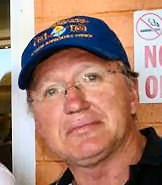
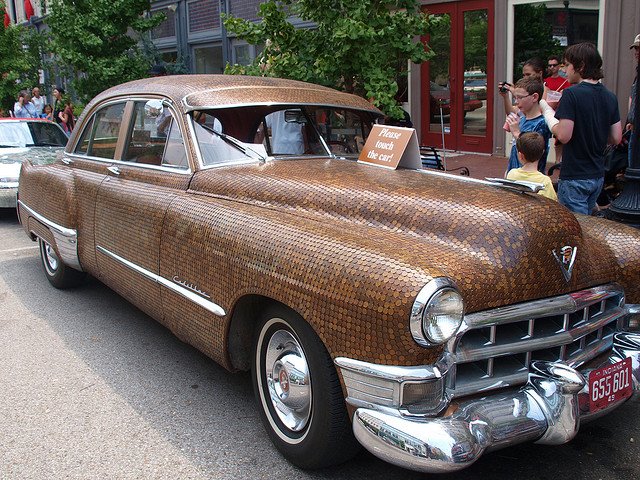
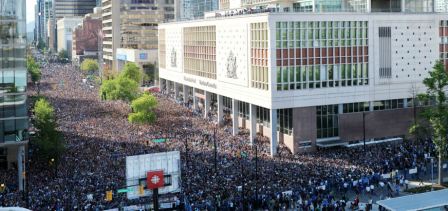
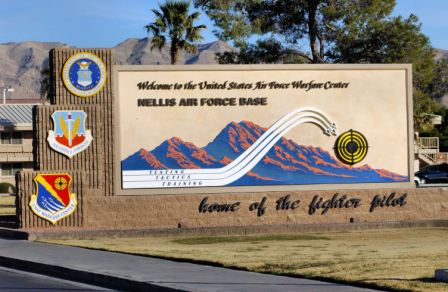
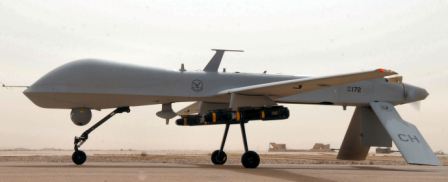
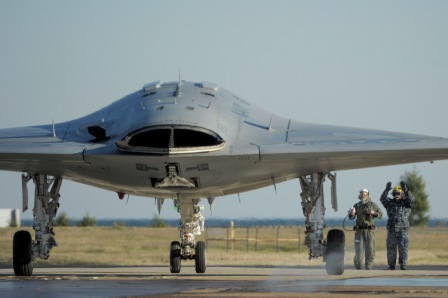
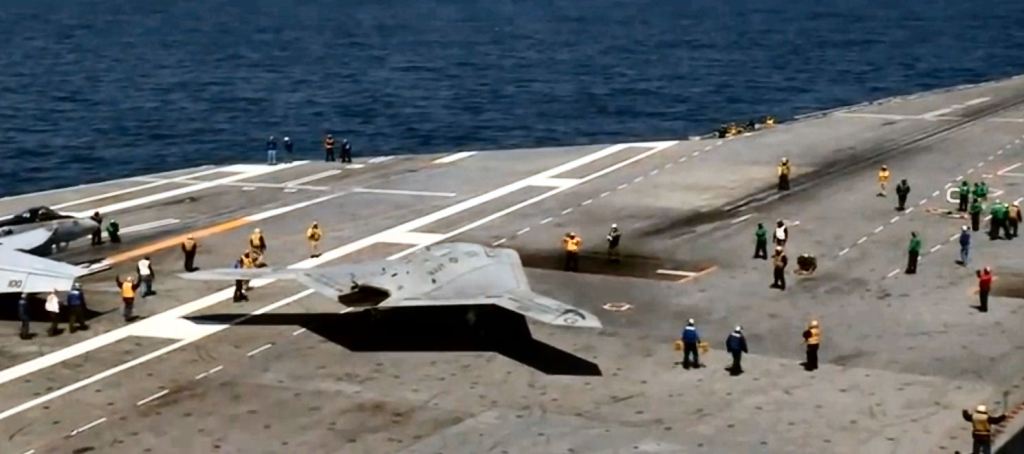
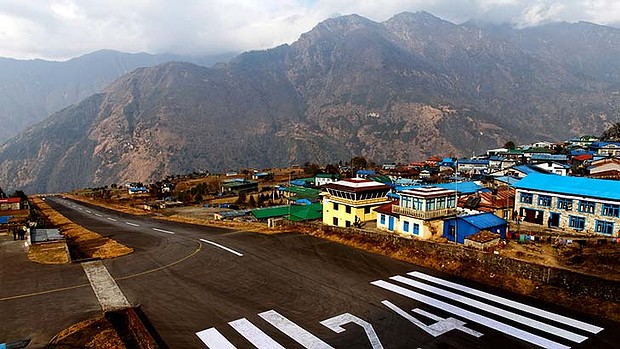
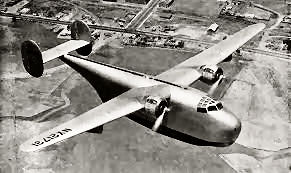 monoplane wings were also held in a high
shoulder-mounted position, themselves made wide and holding two engines
to each wing leading edge in underslung nacelles. The high wings were of
less surface area but promoted a higher fuel efficiency standard than
the low-mounted
assemblies on a B-17. Of note here was Consolidated’s Model 31 (XP4Y
Corregidor - right) foray which utilized the same “Davis” high aspect
wing (or “Davis Wing”).
monoplane wings were also held in a high
shoulder-mounted position, themselves made wide and holding two engines
to each wing leading edge in underslung nacelles. The high wings were of
less surface area but promoted a higher fuel efficiency standard than
the low-mounted
assemblies on a B-17. Of note here was Consolidated’s Model 31 (XP4Y
Corregidor - right) foray which utilized the same “Davis” high aspect
wing (or “Davis Wing”). 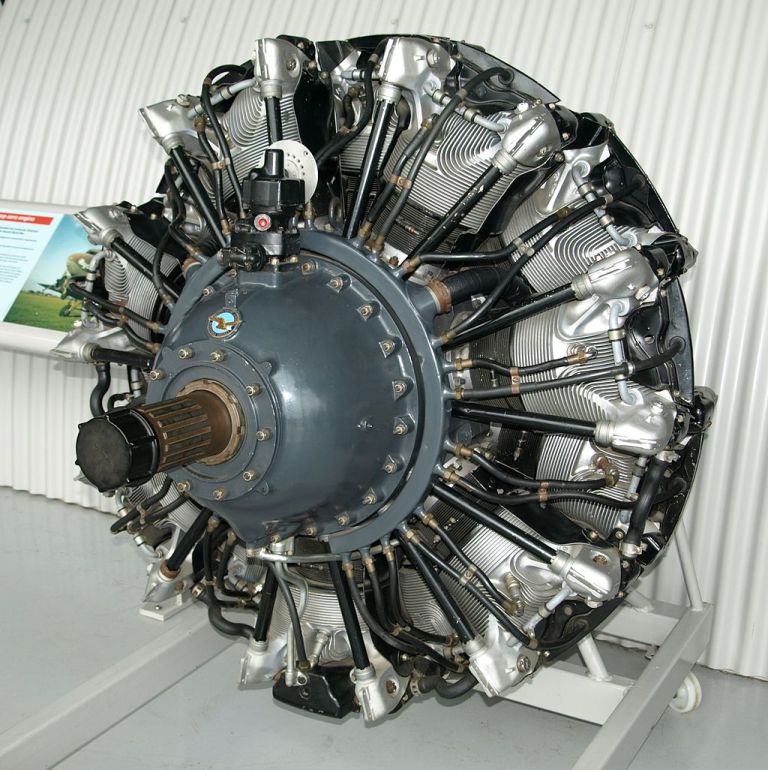 intended for use on the company’s new flying boat design, the Model 31.
Despite the Model 31’s cancellation (only one example emerged from
development), the wing was seen as a good step forward in the design of
the upcoming B-24
intended for use on the company’s new flying boat design, the Model 31.
Despite the Model 31’s cancellation (only one example emerged from
development), the wing was seen as a good step forward in the design of
the upcoming B-24 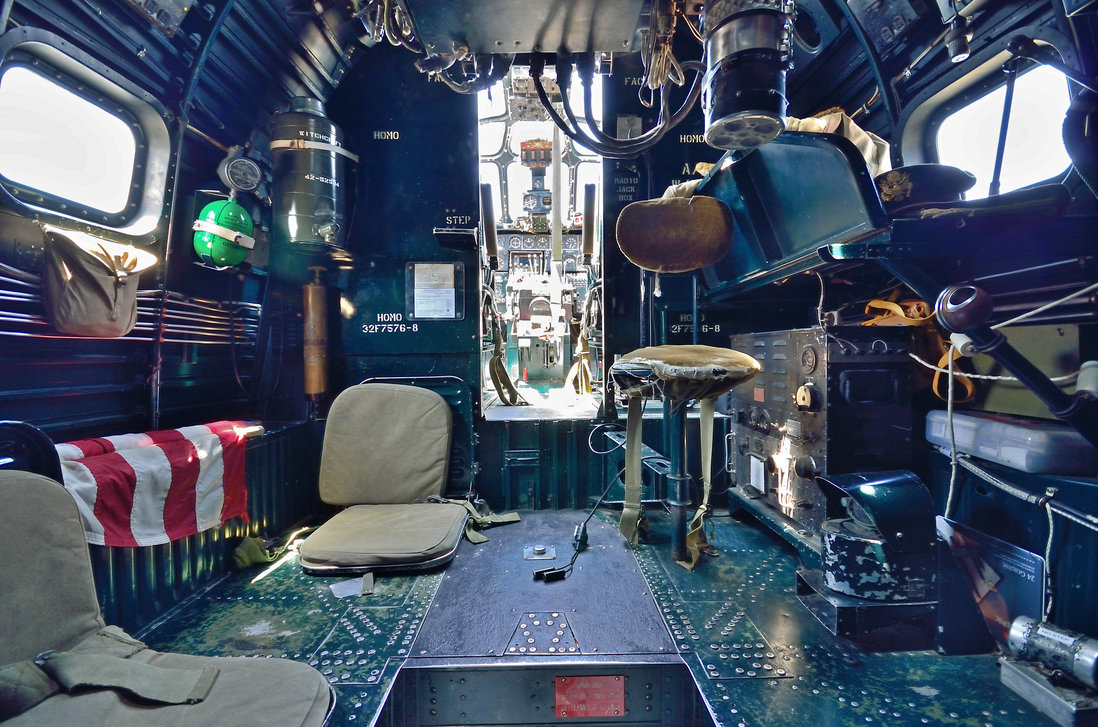
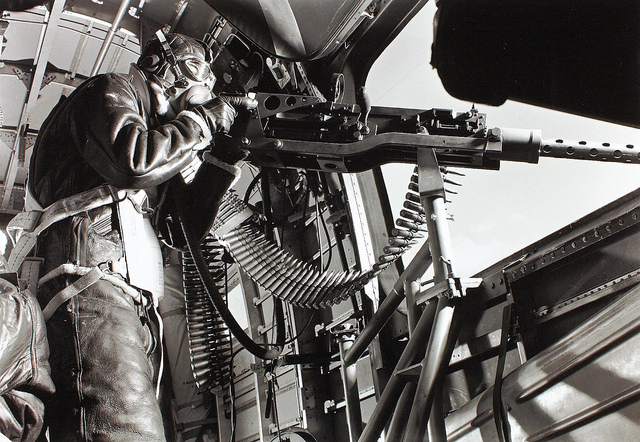
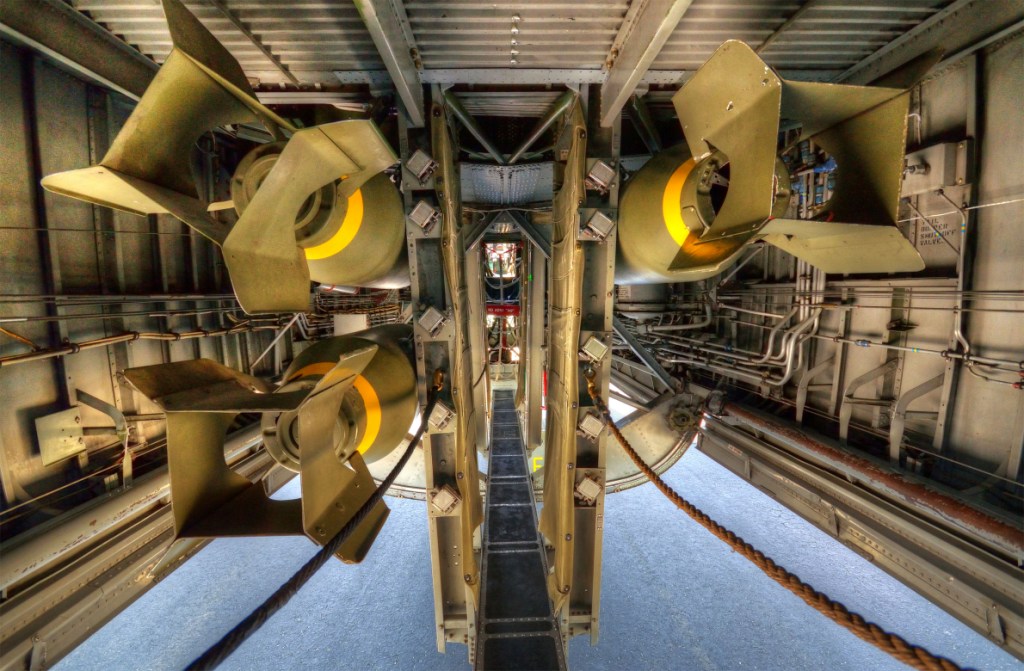
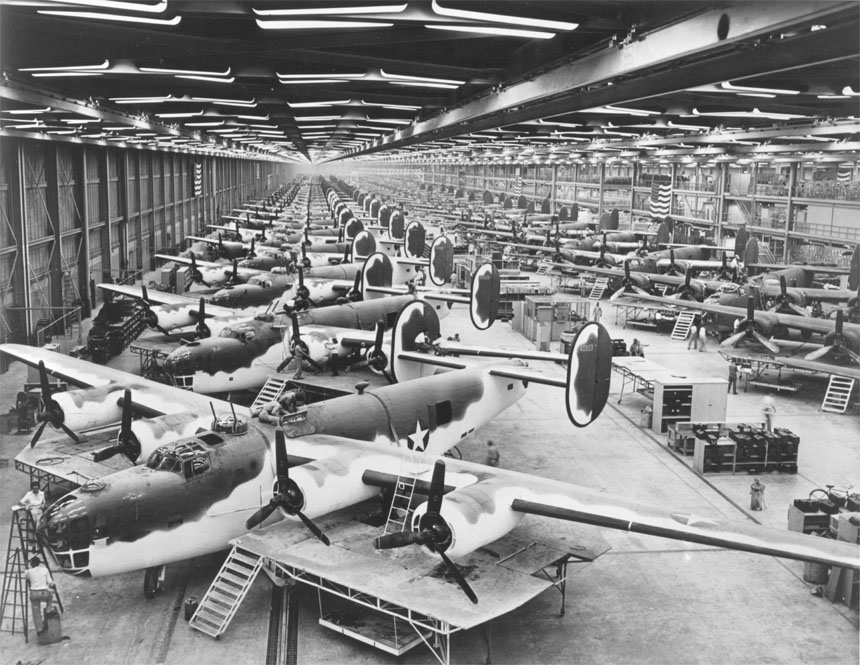
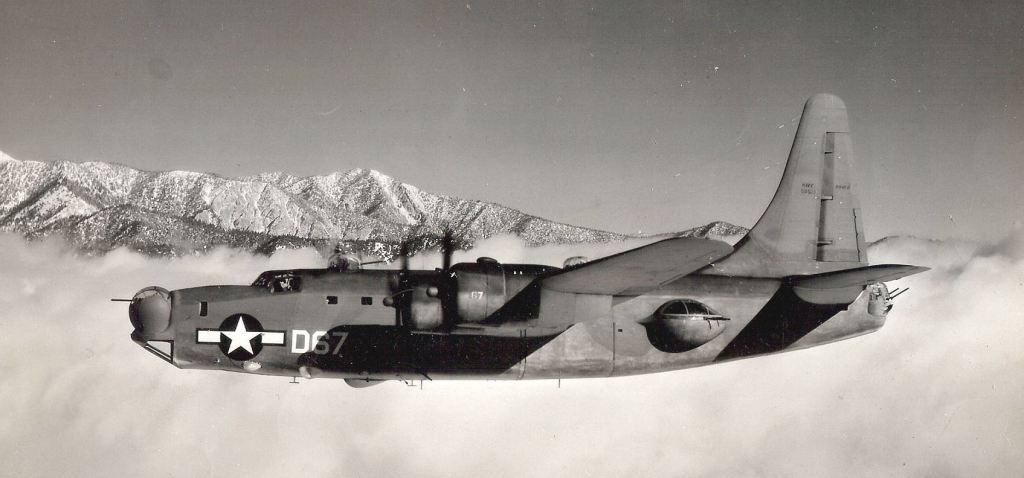
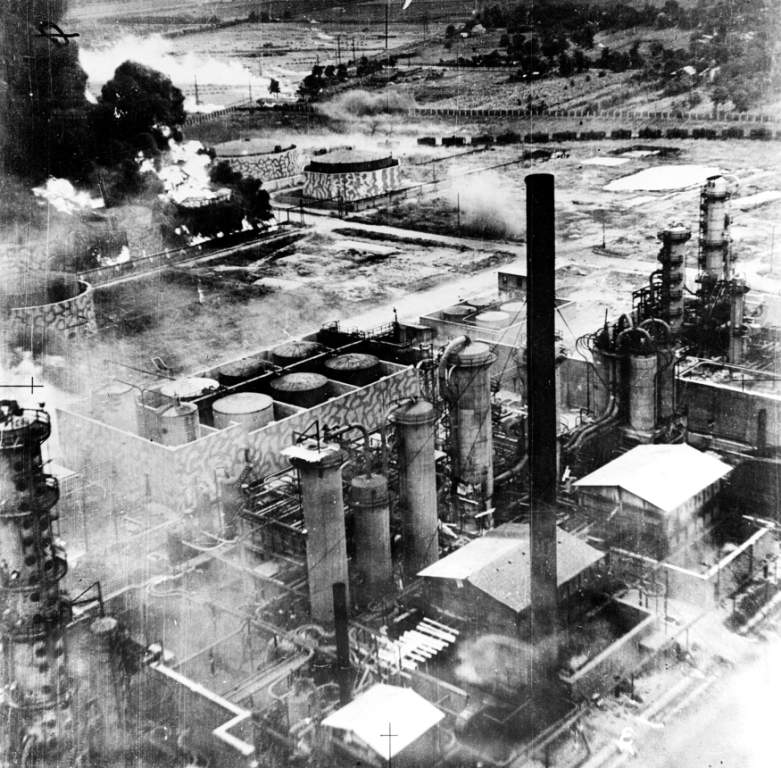 prepared
Axis ground defences time to adjust and further prepare for the ensuing
waves. The B-24 flights arrived flying at tree-top altitude and expected
by their enemy foes.
prepared
Axis ground defences time to adjust and further prepare for the ensuing
waves. The B-24 flights arrived flying at tree-top altitude and expected
by their enemy foes. 